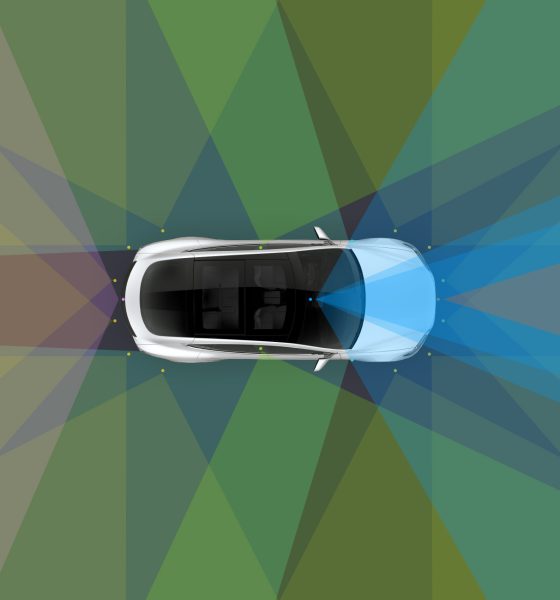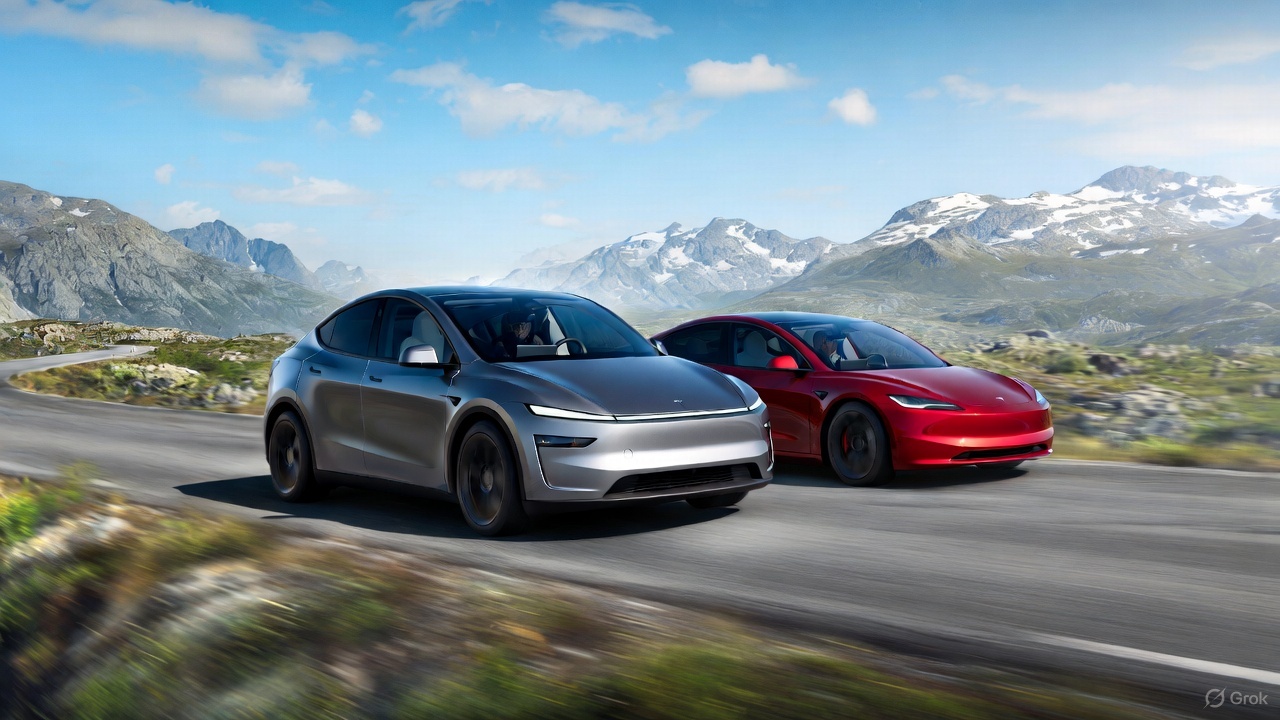

News
Tesla’s newest Autopilot Vision head: Who is Andrej Karpathy?
The EV world was rocked when it was announced that Tesla replaced its Vice President of Autopilot Software, Chris Lattner, with Andrej Karpathy. Karpathy is the company’s new Director of AI and Autopilot Vision, but who he is?
Karpathy most recently worked as a research scientist with Elon Musk’s OpenAI, specializing in deep neural networks.
He also had three summer stints at Google. In 2011 and 2013, Karpathy interned for the tech behemoth working on large scale deep learning and video content analysis. In 2015, he was with Google DeepMind, focusing on deep reinforcement learning.
In 2009, Karpathy graduated from University of Toronto with a Bachelor’s of Science in computer science and in physics. From there, he went to the University of British Columbia and got Master’s Degree in computer science and researched motor control, primarily learning controllers for physically simulated figures.
After finishing graduate school in 2011, Karpathy went to Stanford University to pursue a Ph.D in computer science. He researched machine learning, with an emphasis on deep learning for computer vision and natural language processing. He worked under adviser Fei-Fei Li, the director of Stanford’s AI lab and chief director of Google Cloud. According to his Stanford profile, Karpathy graduated in 2015 before jumping to Google DeepMind and eventually OpenAI.
Karpathy has been published in scholarly journals and for conferences, including the International Conference on Learning Representations. He also published a couple of blogs to keep his followers posted on research development and a lighter one on topics such as a survival guide to a Ph.D.
In February of this year he joined the steering committee of distill.pub, a journal focusing on machine learning research.
Karpathy will report directly to Musk, and work closely with chip expert and Vice President of Autopilot Hardware Jim Keller on advancing Tesla’s self-driving technology.
Tesla released the following statement regarding the hiring of Karpathy:
Andrej Karpathy, one of the world’s leading experts in computer vision and deep learning, is joining Tesla as Director of AI and Autopilot Vision, reporting directly to Elon Musk. Andrej has worked to give computers vision through his work on ImageNet, as well as imagination through the development of generative models, and the ability to navigate the internet with reinforcement learning. He was most recently a Research Scientist at OpenAI.
Andrej completed his computer vision PhD at Stanford University, where he demonstrated the ability to derive complex descriptions of images using a deep neural net. For example, identifying not simply that there is a cat in a given picture, but that it is an orange, spotted cat, riding on a skateboard with red wheels on brown hardwood flooring (http://cs.stanford.edu/people/karpathy/main.pdf). He also created and taught “Convolutional Neural Networks for Visual Recognition,” the first and still leading deep learning course at Stanford.
Andrej will work closely with Jim Keller, who now has overall responsibility for Autopilot hardware and software.
To see Karpathy in action discussing deep learning, check him out here:

News
Tesla FSD earns high praise in South Korea’s real-world autonomous driving test
As per the Korea Expressway Corporation’s report, the FSD test was conducted on December 15, 2025, from 10 a.m. to 6 p.m.

Tesla’s Full Self-Driving (FSD) has received a bullish assessment from the Korea Expressway Corporation following a real-world autonomous highway driving test.
A report of the test, shared on Naver Cafe, showed high praise for the system’s safety, capabilities, smooth maneuvers, and confidence.
South Korean highway test
As per the Korea Expressway Corporation’s report, the FSD test was conducted on December 15, 2025, from 10 a.m. to 6 p.m. Four people were in the Tesla that was tested, including the head of the mobility department. All four FSD driving modes were tested, from “Sloth” to “Mad Max.”
To test FSD’s performance, the system was tasked to operate on highways such as Gyeongbu, Cheonan, and Cheonan-Nonsan, as well as city areas in Dongtan New Town, Sejong Special City, and Daejeon Metropolitan City, among others.
Since FSD is only available for the Tesla Model S and Model X that are imported to South Korea from the United States, the system was not tested in a Model 3 or Model Y, which comprise the majority of Teslas on the country’s roads today.
Highway test results
Results showed FSD performing well, both in inner-city roads and on highways. In inner city roads, the testers noted that FSD was capable of autonomous driving at a level that already exceeds that of general human drivers, except in very few areas, such as unprotected left turns and work zone intersections.
In highways, the testers described FSD’s performance as “excellent,” though the system still showed frequent cases of violations in local bus lanes and max speed limit rules. These, however, could hopefully be addressed by Tesla in a future FSD update without many issues. The testers also noted that in some parts of the test, FSD seemed to be driving autonomously in accordance with traffic flow rather than strict traffic rules.
테슬라 Fsd 고속도로 자율주행 테스트 결과 보고 by Simon Alvarez
News
Tesla claims nearly 20% market share as Norway sets new car sales record
Tesla captured roughly one in five new cars in Norway, highlighting its dominance in the world’s most EV-friendly market.

Norway shattered its all-time new car sales record in 2025, and Tesla emerged as the clear winner. A year-end rush ahead of higher EV taxes pushed registrations to nearly 180,000 vehicles, with electric cars accounting for 96% of sales.
Tesla captured roughly one in five new cars in Norway, highlighting its dominance in the world’s most EV-friendly market.
Norway’s EV rush
As noted in a CarUp report, Norway’s electric vehicle sales in 2025 surged, thanks in part to buyers rushing ahead of a post–new year VAT increase of roughly 50,000 kronor on many new electric cars. This ended up pulling demand forward and setting a national record with almost 180,000 registrations in 2025.
The result was unprecedented. From the vehicles that were sold in 2025, 96% of new cars sold were fully electric. And from this number, Tesla and its Model Y made their dominance felt. This was highlighted by Geir Inge Stokke, director of OFV, who noted that Tesla was able to achieve its stellar results despite its small vehicle lineup.
“Taking almost 20% market share during a year with record-high new car sales is remarkable in itself. When a brand also achieves such volumes with so few models, it says a lot about both demand and Tesla’s impact on the Norwegian market,” Stokke stated.
Tesla domination
Tesla led all brands in Norway with 34,285 registrations, which is equal to a 19.1% market share. These results place Tesla well ahead of Volkswagen and Volvo, which held a 13.3% and 7.8% market share in 2025, respectively.
On the model chart, Tesla’s strength was even clearer. The Tesla Model Y topped all vehicles with 27,621 registrations, accounting for 15.4% of the entire market. The Tesla Model 3 also ranked among the top five, accounting for 3.7% of Norway’s entire auto sales in 2025.
Other strong performers included Volkswagen’s ID.4 and ID.7, Toyota’s bZ4X, which commanded 4.9%, 3.9%, and 4.1% of Norway’s total sales in 2025, respectively.
News
Tesla China sees 2nd-best month ever by selling 97,171 vehicles wholesale in December
The results mark Tesla China’s second-highest monthly result on record, trailing only November 2022’s 100,291 units.

Tesla posted a sharp year-end rebound in China last month, with December’s wholesale figures climbing to their second-highest level to date.
The surge capped a late-year recovery for the electric vehicle maker, even as full-year wholesale figures still finished lower year over year. Still, the data highlights how Tesla China’s offerings still resonate with customers in the world’s most competitive electric vehicle market.
Tesla China’s December surge
Tesla China sold 97,171 vehicles wholesale in December, as per data from the China Passenger Car Association (CPCA). The results mark Tesla China’s second-highest monthly result on record, trailing only November 2022’s 100,291 units, based on data compiled by CNEVPost. The details of Tesla China’s December results, such as its domestic sales and exports, are yet to be released.
December’s wholesale results represent a 3.63% increase from the same month last year and a 12.08% jump from November’s 86,700 units. It also marked the second consecutive month of year-over-year growth, signaling renewed momentum in China.
Tesla’s late-year momentum is believed to be partly driven by Tesla pulling deliveries forward to allow buyers to take advantage of more favorable purchase tax policies before the calendar year ended. That strategy helped boost monthly performance even as competition in China’s EV market remained intense.
Tesla China’s FY 2025 volumes
Despite the strong December finish, Tesla China’s wholesale sales declined on an annual basis. The electric vehicle maker’s total wholesale figures for 2025 reached 851,732 units, down 7.08% year over year. This could have been due to a variety of factors, from intense competition in the domestic Chinese market to Giga Shanghai’s changeover to the new Model Y in the early part of the year.
Tesla Gigafactory Shanghai continues to play a central role in its global operations, producing the Model 3 sedan and Model Y crossover for both Chinese customers and export markets. The efficiency of Gigafactory Shanghai has allowed it to become Tesla’s largest factory by volume, as well as the company’s primary vehicle export hub.







